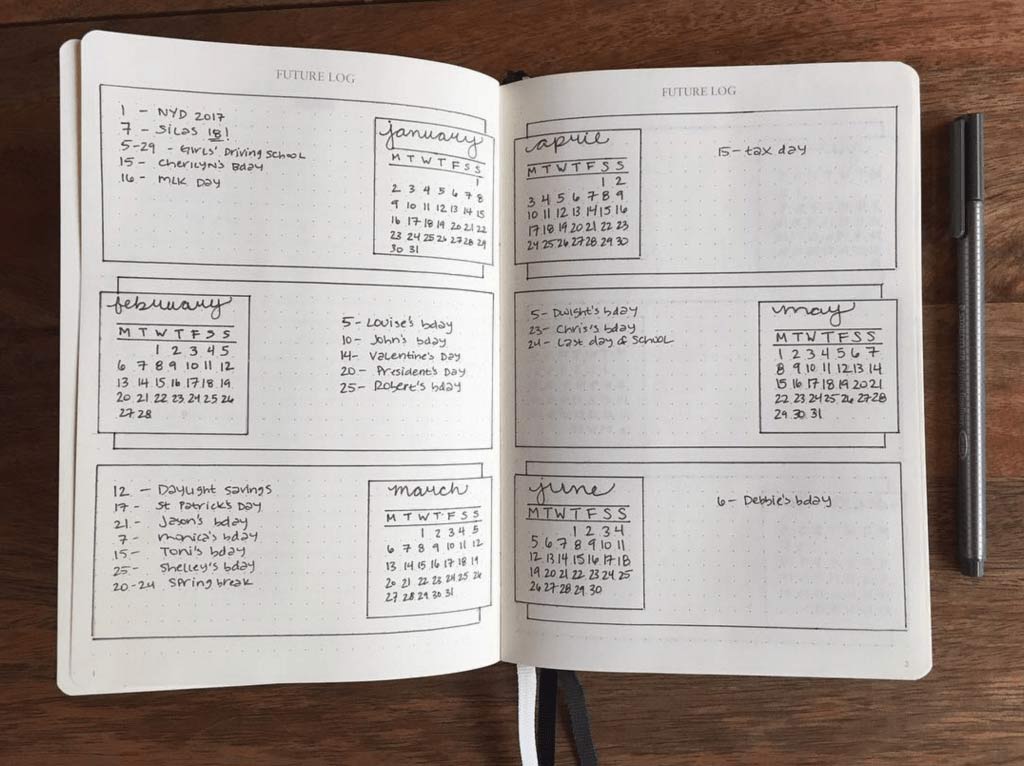
Everyone has personal and professional goals. Everyone has bucket lists. And if our goals and wish lists are important enough, we do things to make them happen, usually in small increments.
As a business owner, you have a whole separate array of aspirations. Perhaps even one day to sell your online business. But in the daily grind of running a business, you have to wear a myriad of hats daily – do the marketing, resolve customer issues, take calls, send out invoices, watch the ebb and flow of revenue, take part in recruiting and hiring… and the list goes on (note from the author: at SlideModel we know about that). And then there are those long-term goals – development of new products/services, expanding into new markets, or moving forward with digital transformations. With all of the daily demands, though, it is easy to finish a day and feel that nothing productive was accomplished.
If this sounds like you, you may have already attempted to use various digital apps to keep yourself organized. Or maybe you have even tried the Get Things Done Technique. But somehow, following the organizational structure of someone else and fitting yourself into their methods just doesn’t work.
Maybe it’s time for a new “system”. Maybe it’s time for bullet journaling.
So what is a Bullet Journal?
Many have described a bullet journal as a calendar, to-do list, goal setter, and planner, reminder, and organizer all in one. This versatile journaling method can help track the past, organize the present, and plan for the future, along with prioritizing as you go.
The term and the method of bullet journaling were coined by Ryder Carroll and is fully explained in his cult book, The Bullet Journal Method.
As Carroll explains, the BuJo concept came from his pondering on “being busy” vs. “being productive”.
“Inevitably we find ourselves tackling too many things at the same time, spreading our focus so thin that nothing gets the attention it deserves. This is commonly referred to as “being busy”. Being busy, however, is not the same thing as “being productive”. – Ryder Carroll, The Bullet Journal Method: Track the Past, Order the Present, Design the Future
And as he aptly states, “For most of us, being busy is code for being functionally overwhelmed”. We jump from one thing to the next, put out fires, and develop anxiety over what should be getting done that isn’t.
So consider a bullet journal a productivity app, but one in analog style. Yes, you will be using an actual journal, with paper and pencil/pen. It’s the analog method for the digital age!
Here’s how a sample bullet journal layout looks:

Source: Photo by Matt Ragland on Unsplash
- You will have a page for each month of the year, with the days numbered (and days of week noted). This will be on the left of an open journal.
- On the right page will be a list of all of those things that you must/need/want do this month. These are categorized by using different types of bullets for tasks, events, and notes so that they can easily be identified.
- A small open box will be for tasks (you can check them off as completed), a circle for events, and a dark round bullet point for notes. You can also place a star by those that are most important/critical.
- If there are specific days of the month for a task or event, these can be noted next to the calendar days on the left page – meetings, appointments, etc.
Once you have your monthly list of tasks, events, and notes, you are ready to divide that list into days. This will be done on the next pages. You do not have to plan every day at the beginning of the month – maybe start with the first few days and list the tasks, events, and notes from the previous monthly page, moving on to the next days as you go.
On the monthly page, completed tasks get a checkmark in the box; events can be checked off as well. If the notes are still relevant, leave them alone. If a task becomes irrelevant draw a line through it.
At the beginning of the next month, you now have a way to track your past, and to organize your new present. For example, tasks that are still important but not completed are now added to your new list. If you like, you can also allocate one page for a bullet journal future log in the dotted notebook – a spread where you can highlight important events and milestones. There are plenty of bullet journal ideas, here is just an example for inspiration:

Example of Future Log in the Dotted Notebook. Source: Future Log Inspiration – Bullet Journal
Why Bullet Journaling is Better Than Other Productivity Systems
First of all, a bullet journal is “a living document”. It represents all that you have done, what you plan to do “in the now”, and what your plans are for the future. If you are frustrated with the fact that most productivity apps don’t provide enough room for retrospective analysis and personal after-action review (so to speak), then you’ll find bullet journaling more delightful.
And there are plenty of other benefits too:
- You can make a BuJo structurally yours. While there are basic rules, you have the flexibility to tweak your journal as you please and transform it into a “comfortable” task management system that suits you.
- Bullet journalling forces you to set intentions and to bring more reflection into the entire productivity/planning process
- You can easily migrate unfinished business to the new month, eliminate what you no longer consider important, and see at a glance what you did accomplish in the past.
- Plenty of research studies indicate that handwriting helps to reduce anxiety and stress, through its calming effect, and can even increase creativity.
- You can divide your long-term future goals into small chunks and place these in your monthly/daily list so that you can feel that you are working toward them, as well as accomplishing those other tasks that are more immediate. As Carroll says, “Each bullet journal becomes another volume in the story of your life. Does it represent the life you want to live? If not, then leverage the lessons you’ve learned to change the narrative in the next volume”.
- You can easily set priorities (a star next to the most critical tasks) and keep close tabs on those.
More Tips on How to Bullet Journal

Source: Unsplash
As explained above, bullet journals are typically divided into months, weeks, and days. And, as stated, there are bullet symbols for each type of entry – tasks, events, and notes, most typically.
You can keep a running tally can be kept of tasks and events by checking things off. And those things that were not accomplished can either be eliminated, if no longer relevant or important, or migrated to the next month if still necessary. For a great visual rendition, check out this YouTube video crafted by Carroll himself.
But there are a couple of additional elements of the bullet journals that should be covered too:
The Index: This is on the beginning page of your journal and is key to any bullet journal setup. It is organized by months. Each month should be listed, along with the page numbers in the journal for that month. This is how you track your past, quickly and easily.
Bullet journal key: Your monthly, weekly, daily logs are all in writing, with symbols to designate each type of entry – tasks, events, notes. Another detail here is that part of your key should include some symbol for critical importance. This is your prioritization technique.
You check off tasks and events as finished, cross through those that are no longer needed, and look at your notes to see if they should be migrated to the next month, along with tasks and events that were not completed or did not happen.
Collection: This is an interesting aspect of bullet journaling because it allows you to categorize tasks and events by business or personal categories. In each category, you can list tasks and events as they have occurred, so that you have a running history of what has already been accomplished and what still needs to be accomplished.
Collections are especially good for long-term goals because they allow a business owner to see the progress made toward them. If not enough, then monthly planning for the future can include more of the activities toward these goals. In those collections, you can list what has been accomplished and the month/day they were. And you can list the activities by month that you plan for the future.
Bullet Journal Ideas for Business Owners
Below is a quick overview of tasks and process you can manage through your bullet planner to bolster your productivity and efficiency:
- Project Management: You can set up a collection of tasks and events for a project, divide them up into smaller chunks, and put those into your monthly/weekly/daily entries. You will see at a glance the progress being made and know whether you need to step it up or are on track. Check our project planning presentation templates.
- Finances/Budgets: What day of each month will you be sending invoices? Or is that a fluid arrangement in which invoices go to specific customers/clients based upon the timing of their orders? You can add these tasks to each monthly plan, as necessary. What is your plan for setting up and monitoring your budget? What meetings will be necessary to determine budget priorities? How often will you need to review your budget? All of this can be a part of your monthly lists.
- KPIs: Once you have defined your key performance indicators, how often will you be checking on them? Again, these are things that can be put into collections and then migrated to monthly tasks.
- Time Management: As you review each month and what was accomplished, you will be able to see your productivity. If you are migrating too many tasks forward, for example, it may be time to look at how you are managing your time and make adjustments to your daily schedule. What activities are you engaging in that are not on your weekly or daily lists? For more information, check our article about Eisenhower decision matrix.
- Professional Development: Whether this involves your independent study and reading or participating in more structured development activities, you can look back at the last several months and see what your engagement has been. Again, if you find yourself continually migrating these activities forward and never really getting to them, then you have to decide how important they are and if you are losing any competitive edge by not keeping yourself current.
This list can go on and on and will be unique to your business, of course. But the more functions you can embed in bullet journaling, the better opportunity you have to assess where you’ve been, where you are now, and where you need to be in the future.
Conclusions
A bullet journal is a highly individual thing. There is no single bullet journal template that will work for everyone. The point is, though, that you need to have a bullet journal monthly spread, divided into a bullet journal weekly spread, divided into daily spreads. And the notes sections can be important too. You can jot downtime management tips, ideas big and small, productivity tips, and more. As Carroll says, “It’s part organization, part soul-searching, part dream-weaving.”


